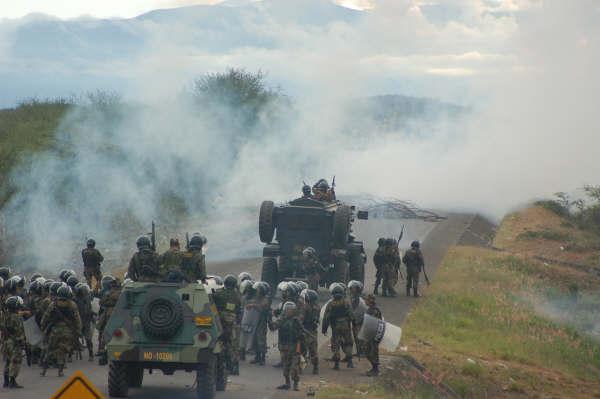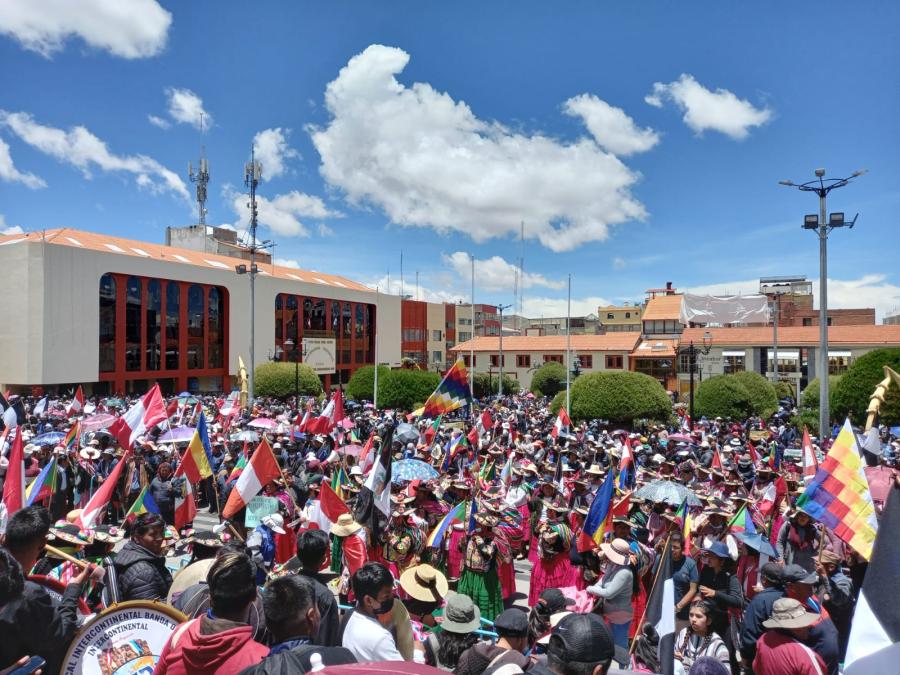
On September 22nd, 2016, Peru’s courts ruled to absolve 52 Indigenous people of all charges related to the death of 12 policemen during the altercation in June of 2009 known as the Bagua Massacre.
The incident, known as “Baguazo” took place at the Devil’s Curve in Bagua, Peru, when Peruvian security forces were sent in to displace several thousand Indigenous Awajun and Wambis protesters who were peacefully blockading a highway through the Amazon near Bagua, 600 miles north of Lima, in defense against a law that would privatize Amazon forests for extractive industry as part of the Free Trade Agreement signed between the US and Peru in 2009.
The judge declared all 52 men innocent of homicide as well as charges related to blocking highways, given the understanding that the men were acting under the higher purpose of as defenders of their environment. Indigenous leaders Alberto Pizango and Santiago Manuin were also absolved of the additional charges of being instigators and conspirators.
“This represents the great strength of the Indigenous People, not just materially, but spiritually. Only god knows the difficulties endured by our Awajún-wampis brothers and our leader Alberto Pizango during these seven years awaiting a trial,” reacted the members of the board of directors of AIDESEP, the Asociación Interétnica de la Selva Peruana, of which Pizango was the President at the time of his arrest.
Of the 52 initially charged, 24 are Indigenous Wampis, Awajún, and Shawi, and 29 are mestizo (of both Indigenous and non-Indigenous descent). According to Peruvian newspaper La Republica, during the hearing, lawyers argued for the consideration of the pluri-cultural nature of the country, as well as antecedents of expert testimony by anthropologists in previous court cases to help the court contextualize the nature of the Indigenous culture and their history of defense of their lands. Lawyers also demonstrated that the 52 men had been arrested without any clear evidence against them. Despite this, prosecutors had asked for life sentences. “I don’t know who is responsible for the acts, and I don’t speculate; but this is a lesson that no one should forget, so that it does not happen again.” said the presiding judge, Gonzalo Zabaruru Saavedra, during his decision. Read the full text of the ruling in Spanish, here.
Behind Bagua
On June 4th, a motion to repeal the law was shut down. At the break of dawn the next day, military in anti-riot gear launched an attack with tanks and helicopters shooting tear gas canisters and firing machine guns at the crowd. Official reports declare 33 Peruvians were killed, including 22 police and 10 Indigenous, however AIDESEP reported the number of protesters killed to be higher. Almost 200 people were injured. For the year following the massacre, Pizango was forced to flee to Nicaragua where he received asylum.
Five years later in 2014, it was revealed through leaked diplomatic cables between the United States State Department and the embassy in Lima that the US played a role in pressuring the Peruvian government to use force against the protests. Just four days before the massacre, the US sent a cable addressing the growing Indigenous protests, stating, “Should Congress and President Garcia give in to the pressure, there would be implications for the recently implemented Peru-US Free Trade Agreement.” This mirrored public comment by Peruvian government officials who argued that acceding to Indigenous demands to annul controversial new laws would doom the entire FTA. U.S. officials argued that the Peruvian government was being too lenient by allowing the Indigenous roadblocks to continue. “The government’s reluctance to use force to clear roads and blockades is contributing to the impression that the communities have broader support than they actually do,” the cable read.
Seven years after Bagua, Peru is now one of the 12 countries who have agreed to sign on to the Trans Pacific Partnership, another Free Trade deal that would facilitate extractive industries at the risk of Indigenous Peoples.
Read more: Indigenous Peoples did not Consent to the TPP


